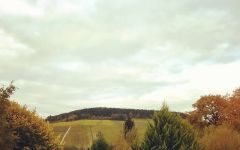Domaine Laroche Chablis Saint Martin 2020
- Decanter



Product Details
Your Rating
Somm Note
Winemaker Notes
The Saint Martin cuvée is a blend of the most beautiful parcels of the domain in the appellation. All located on the Kimmeridgien, thanks to their multiple nuances, they build the richness and complexity of the wine.
The intense freshness of the terroir is found in Chablis Saint Martin, which finds a balance in the expression of ripe fruit with aromas of white flowers. The minerality at the end of the mouth gives it length and character.
Perfect as an aperitif or to pair with seafood, prawns or fish.
Professional Ratings
-
Decanter
Classy, understated style of Chablis with a great balance between ripeness of fruit and powerful acidity. The palate has a creamy texture with no jagged edges and fine, mineral characters coming through on the finish. Real purity and drive here - one of the best Saint Martin Chablis I've tried.
Other Vintages
2021- Decanter
-
Wine &
Spirits
-
Wine
Enthusiast - Decanter
- Decanter
-
Robert
Parker
-
Wine
Spectator
-
Robert
Parker











The history of Laroche dates to 1850, when Jean Victor Laroche purchased his first parcel of land in Chablis. Since then, Domaine Laroche has led movements to raise the quality of the appellation with the creation of a charter of excellence for the Grand Cru producers. One of the most respected and largest landholders of premier and grand cru vineyards, the winery owns 90 hectares situated among the best crus. Its headquarters, the Obédiencerie of Chablis, reveals a heritage dating back to the Middle Ages when the Canons of St. Martin of Tours were making wine. St. Martin’s relics were hidden in the Obédiencerie for a decade. Domaine Laroche still produces and ages its premiers and grands crus in these historical cellars. Under the direction of Gregory Viennois, the winemaking team designate one team member to each plot who is wholly responsible for the management of that vineyard from pruning and health of the soil to the quality and quantity of fruit yields. It is this philosophy that makes the expression of each Domaine Laroche wine individual and unparalleled in quality and style. The importance of the ecological balance is crucial to maintain the vineyard heritage and to favor its durability. The respect of the soil, the vine workers and the environment are the center Domaine Laroche’s philosophy.

One of the most popular and versatile white wine grapes, Chardonnay offers a wide range of flavors and styles depending on where it is grown and how it is made. While it tends to flourish in most environments, Chardonnay from its Burgundian homeland produces some of the most remarkable and longest lived examples. California produces both oaky, buttery styles and leaner, European-inspired wines. Somm Secret—The Burgundian subregion of Chablis, while typically using older oak barrels, produces a bright style similar to the unoaked style. Anyone who doesn't like oaky Chardonnay would likely enjoy Chablis.

The source of the most racy, light and tactile, yet uniquely complex Chardonnay, Chablis, while considered part of Burgundy, actually reaches far past the most northern stretch of the Côte d’Or proper. Its vineyards cover hillsides surrounding the small village of Chablis about 100 miles north of Dijon, making it actually closer to Champagne than to Burgundy. Champagne and Chablis have a unique soil type in common called Kimmeridgian, which isn’t found anywhere else in the world except southern England. A 180 million year-old geologic formation of decomposed clay and limestone, containing tiny fossilized oyster shells, spans from the Dorset village of Kimmeridge in southern England all the way down through Champagne, and to the soils of Chablis. This soil type produces wines full of structure, austerity, minerality, salinity and finesse.
Chablis Grands Crus vineyards are all located at ideal elevations and exposition on the acclaimed Kimmeridgian soil, an ancient clay-limestone soil that lends intensity and finesse to its wines. The vineyards outside of Grands Crus are Premiers Crus, and outlying from those is Petit Chablis. Chablis Grand Cru, as well as most Premier Cru Chablis, can age for many years.
